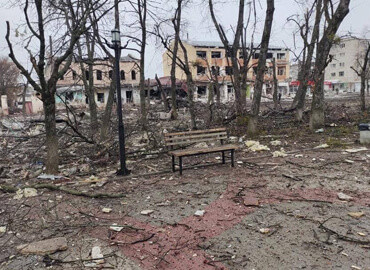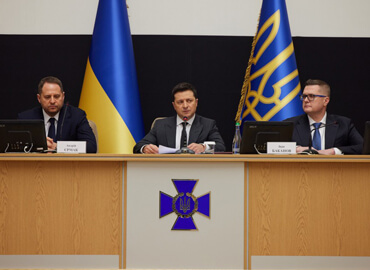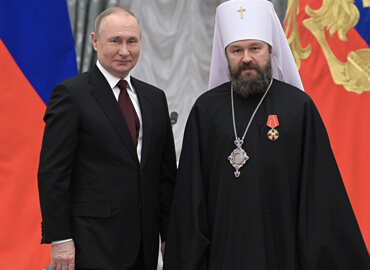On February 9, Russian media reported on the publication of the text of the Military Doctrine of the Union State. Vladimir Putin and Alexander Lukashenko approved the new version of the document in November 2021. Is there anything fundamentally new in the document? What aspects should be given attention, considering the deep socio-political crisis in Belarus and the unstable security situation in the region?
As Kommersant writes, compared to the 2001 doctrine, the new document lists many more factors «negatively affecting the security of the union of the two countries.» Specifically, there is «opposition on the part of some international organizations and foreign states to the development of the Union State, the Collective Security Treaty Organization, and other integration entities in which Belarus and Russia participate.» The document does not specify which countries and organizations allegedly put spokes in the wheels and create problems, but it is easy to guess that the Kremlin is referring primarily to the U.S. and NATO, because, if we recall political statements made by Russian and Belarusian officials, the EU countries, the UK, Ukraine, and Georgia are merely «satellites» or «puppets» of the U.S.
In reviewing the two documents, experts note that «attempts to change value orientations and development models; discredit cultures, religions and civilizations; falsify history; contributing to the violation of the spiritual and moral ties of kindred peoples» were added to the group of negative factors, from which we can conclude that information-psychological confrontation will be given special attention by the defense departments. It is interesting to note that this provision is prescribed using the ideologemes «kindred peoples,» «falsifications,» etc., as since 2021 there has been an increasing use of such themes; so much so, apparently, that it is worth preparing for its further development and implementation.
The authors of the doctrine ascribe «joint information support of decisions made in the field of ensuring the military security of the Union State» to the main directions of military policy.
In simple terms, the coverage of all possible military actions will be controlled by the Kremlin or coordinated with it.
It can also be considered a new phenomenon that «the use of information and communication technologies to carry out hostile actions that pose a threat to international security, including those aimed at discrediting the participating states» is considered as one of the «main military threats» (i.e., discrediting can be regarded not even as a danger, but as a military threat).
In addition, «the emergence on the territories of states adjacent to the Union State of armed conflicts directed against the vital interests of the Union State» will be considered a military threat. It is possible that this provision refers to the conflict between Ukraine and the self-proclaimed LDNR, and «vital interests» here may mean the need to «protect» Russian citizens or even just the Russian-speaking population.
Moreover, «external military danger» also includes «fixing in military doctrines, strategies, concepts, and other state political and legal acts provisions on the unresolved territorial disputes and other interstate conflicts with participating states, as well as the citing in state documents of these as threatening factors.» Undoubtedly, here we are talking primarily about the interpretation of the Crimean issue in the military doctrine of Ukraine, as well as the problem of Abkhazia and South Ossetia in the doctrine of Georgia. This means that for Belarus, the fact that Ukraine considers Crimea to be Ukrainian is now a «military danger.»
It is alarming that in Chapter 2, among the main military dangers that the Union State may face are mentioned «the activities of individual states (coalitions of states), international terrorist and extremist organizations (movements) to destabilize the situation in the states adjacent to the Union State, as well as in state members of the CSTO»; «development by individual states of mechanisms for unleashing internal armed conflicts in other states to change governments in them or violate their territorial integrity using the capabilities of special operations forces, PMCs, and illegal armed groups»; «the creation in participating states of terrorist and extremist organizations (movements), whose activities are aimed at fomenting protest, provoking interethnic and social tension, or inciting ethnic and religious hatred or enmity.» There is a feeling that the wording used in these paragraphs stems directly from the speeches of Lukashenko’s officials and Belarusian propagandists.
Given the dark scenario that was implemented by regime security forces while suppressing protests in 2020, a thoughtful reader may wonder about the degree of likelihood of using Russian armed forces against protesting Belarusians if, say, Alexander Lukashenko informs his ally of a coup attempt involving «extremist organizations» inside the country and their support by an «unfriendly neighboring country.» (Finding a «guilty party» would not be difficult, since Lukashenko treats all neighbors, except Russia, as enemies).
According to independent experts, the above points in the doctrine are not something extraordinary since Minsk and Moscow for decades perceived any protests and speeches of citizens as «inspired from outside» and considered them «part of the West’s actions to unconstitutionally change power and impose its will.» It is important to remember that the previous doctrine noted the following: «The focus of the opponents of the Union State is on the use of historical contradictions in certain regions of the participating states, external support for destructive political forces, extremist nationalist and separatist movements, provoking internal conflicts, drawing participating states into conflicts along their borders, and the weakening of the economy through local wars and armed conflicts.»
Given the sad consequences of 2020 in Belarus, it can be assumed that the armed forces of both states could be used to suppress protests in the Union State countries, because expanding and clarifying the definition of «extremism» and attributing it to all opponents expands the possibilities for the use of military and other law enforcement agencies.
The doctrine also mentions the regional grouping of troops (forces) of Belarus and Russia and discusses the grounds for its deployment «in a period of growing military threat» and its use «in the interests of joint defense.» Because this abbreviation is rarely used by non-specialists, the average person may be anxious and think there are plans to create some new joint formation, but in fact this group has existed for a long time. It consists of the troops from Belarus and the Western Military District of Russia (primarily the 1st Tank Army). Regional forces trained more than once during the Zapad exercises. By and large, these maneuvers are conducted to test readiness and improve the skills of the group.
Considering the recent publication by the Russian authorities of a document on the possible dispatch of the Belarusian military to Syria and Alexander Lukashenko’s subsequent forceful excuses, the question may come up as to whether the new doctrine contains a clause (even in a veiled form) to which the Kremlin could refer to “put the squeeze on” Lukashenko and involve the Belarusian military in operations in Syria. Specifically, in this case, there is no cause for alarm because Russia did not declare war or claim aggression against its troops to seek help from Belarus in the context of the Syrian conflict. In addition, according to the document mentioned, the involvement of Belarusian soldiers in Syria would be presented as a «humanitarian activity» unrelated to the defense of the two Union states.
The doctrine separately emphasizes that «nuclear weapons of the Russian Federation will remain an important factor in preventing the emergence of nuclear military conflicts and military conflicts using conventional weapons,» and does not state that Russian nuclear weapons can be deployed in Belarus. However, the lengthy wording of Chapter 5 leaves some room for maneuver, and not only regarding the issue of nuclear weapons: «The provisions of the Military Doctrine can be refined with a change in the nature of military dangers and military threats, tasks in the field of ensuring military security and joint defense, conditions for the development of the Union State, and changes in national legislations of the participating states.» Therefore, given Lukashenko’s recent statement regarding his intention to «ask Putin» to place nuclear weapons in Belarus, some see this as a hint that the threat should not be discounted.
But the deployment of nuclear weapons has never been associated with either the Military Doctrine of the Union State or the Military Doctrine of Belarus. The possibility of developing a «dangerous» scenario is related to another document. This aspect is spelled out in the current Constitution of the Republic of Belarus, but even it does not formally exclude the deployment of Russian nuclear weapons on the Belarusian territory, since the non-nuclear status and neutrality of Belarus is stated more as a goal and an end in and of itself rather than a strict ban. On the other hand, if the planned amendments to the Constitution of the Republic of Belarus come into force, then «non-nuclear status and neutrality» will no longer be mentioned there, which will facilitate opportunities for deploying Russian nuclear weapons if Putin still decides to support Lukashenko’s initiative. In addition, the new doctrine states that Russia and Belarus consider any actions with the use of military force directed against any of the states as an encroachment on the Union State and will take «appropriate retaliatory measures using any forces and means at their disposal.» Details on the nature and specifics of these measures are not provided.
Материал доступен на русском языке: Военная доктрина России и Беларуси: в поиске новых врагов











